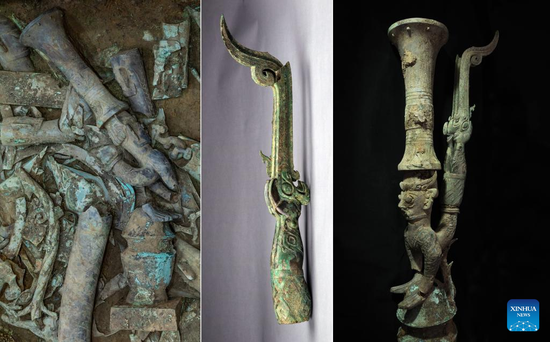
Combo photo shows scattered parts of a newly unearthed bronze sculpture (L) at the No. 8 sacrificial pit at the Sanxingdui Ruins site (photo taken by Xinhua journalist Shen Bohan on June 1, 2022); a bronzeware part (C) that was unearthed from the No. 2 sacrificial pit in 1986 (photo taken on June 15, 2022 and provided by Sanxingdui Museum); and the combination of the two parts (photo taken by Lu Haizi on June 15, 2022), in southwest China's Sichuan Province.
A newly unearthed bronze sculpture at the famed Sanxingdui Ruins site was successfully matched with another bronzeware part after being set apart about 3,000 years ago, the archaeological team confirmed Thursday.
The sophisticated bronze sculpture depicts a figure of a human head and snake body, with protruding eyes, tusks, and horns. Above the head is a cinnabar trumpet-shaped zun (an ancient wine vessel) and the figure is linked by its hands and a square pedestal urn-shaped lei (an ancient wine vessel.) Without the rear part of the body, the sculpture was recently excavated from the No. 8 sacrificial pit.
Archaeologists later found that another bronzeware part, which was unearthed from the No. 2 pit in 1986, can perfectly match with the figure's lost body part.
The incomplete part wears a tight skirt with cloud patterns and has strong legs with bird claws that step on two birds.
Archaeologists speculate that the human-head, snake-body, and bird-claw figure should be a divinity statue.
"The successful matching of cultural relics from different pits has confirmed archaeologists' previous speculation. It also is of great significance for the subsequent restoration of cultural relics at the site. We expect that more bronzeware here can be rejoined together," said Ran Honglin, an official with Sichuan Provincial Cultural Relics and Archaeology Research Institute.
The combination of the two parts also indicates that the two pits were formed at the same time, and the bronzeware was separated before burial. This is of great value for understanding the chronological relationship of each sacrificial pit, the reasons for the destruction of the cultural relics, and the social background at that time, Ran added.
Originally discovered in the late 1920s, the Sanxingdui Ruins have been dubbed as one of the world's greatest archaeological findings of the 20th century.
Located in the city of Guanghan, southwest China's Sichuan Province, the ruins covering an area of 12 square km are believed to be the remnants of the Shu Kingdom, dating back some 4,500 to 3,000 years.
Earlier in 1986, archaeologists discovered thousands of precious cultural relics at the No. 1 and No. 2 pits, including a gold scepter and a bronze sacred tree, which aroused worldwide interest. A joint team of archaeologists has carried out an excavation of another six sacrificial pits at this site since 2020.
So far, more than 50,000 items of bronzeware, jade, goldware, pottery, and ivory artifacts have been unearthed at the site.











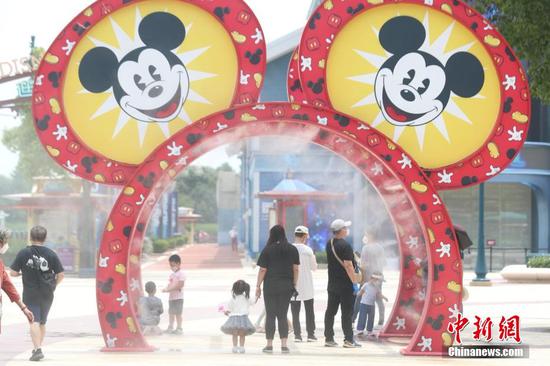

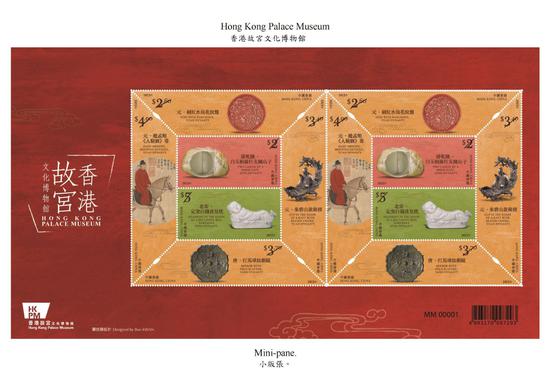
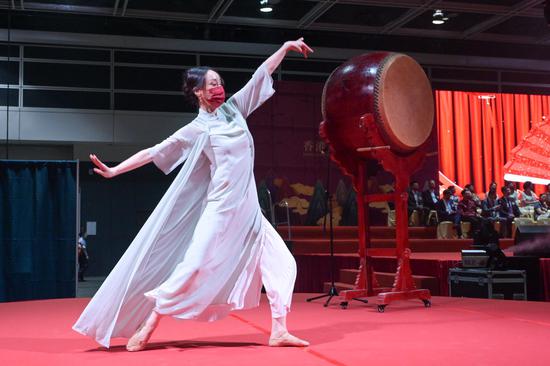

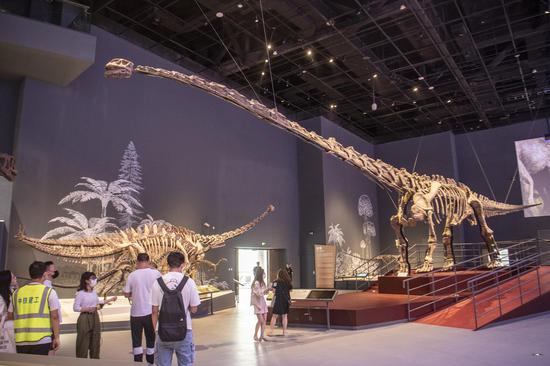
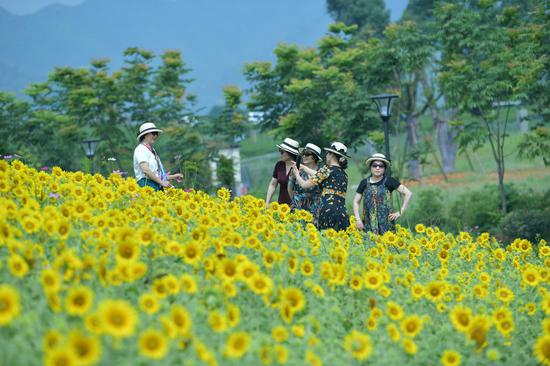







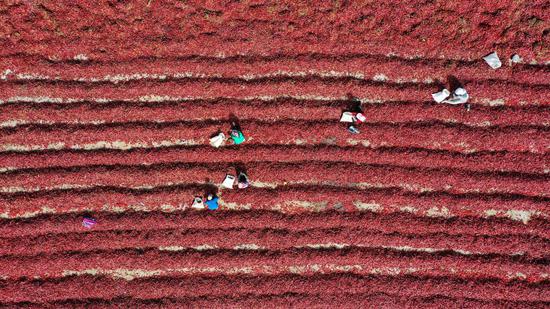
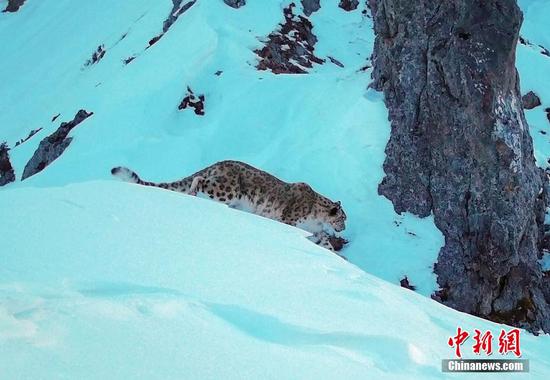
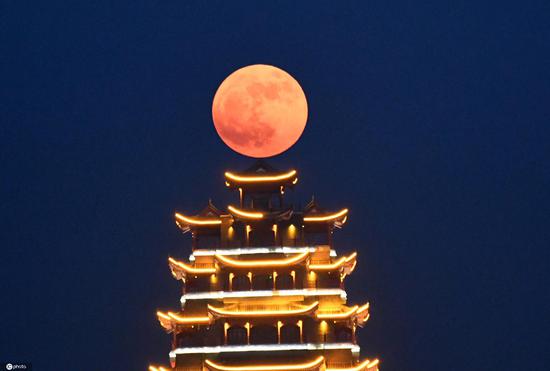


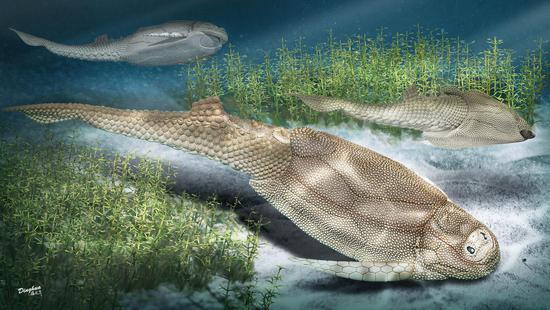
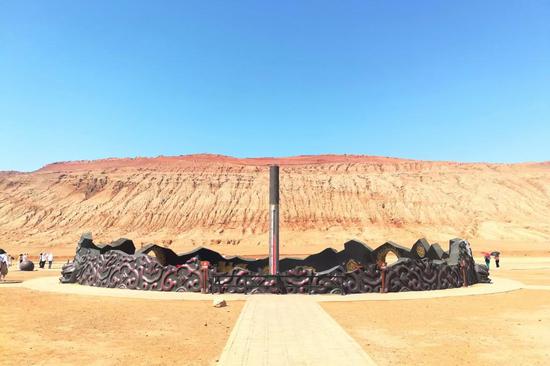





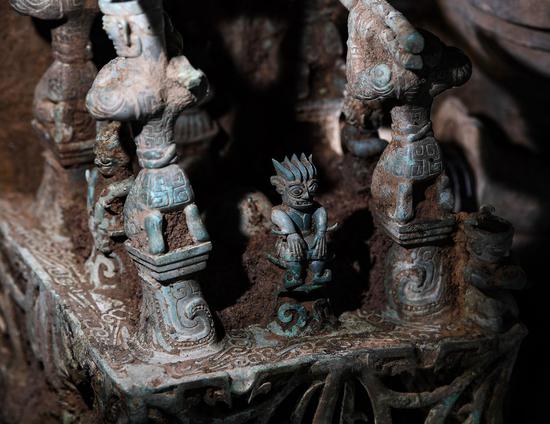

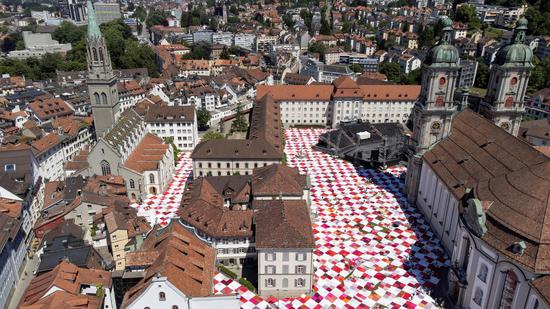






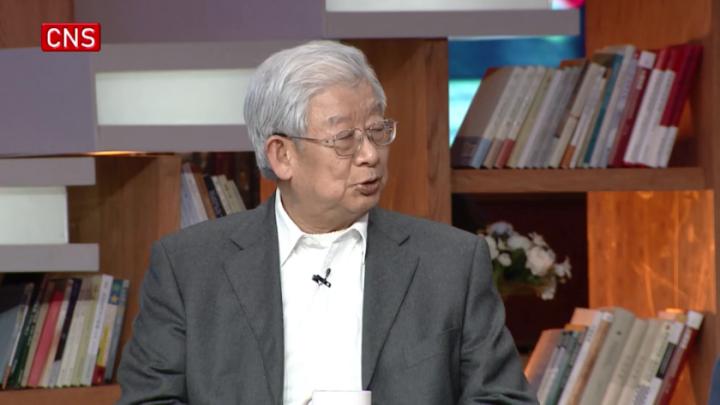



 京公网安备 11010202009201号
京公网安备 11010202009201号